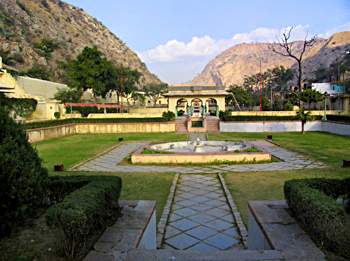Millennium Park is bordered by Michigan Avenue to the west, Columbus Drive to the east, Randolph Street to the North and Monroe Street to the South. It sits in an area that was once considered sacred to the Illinois Central Railroad. City planners developed Grant Park around the railroad tracks but, for decades, many still considered the area to be one of Chicago's less-than-beautiful spots.First planned in 1997 as a way to create new parkland in Grant Park and transform unsightly railroad tracks and parking lots, Millennium Park has evolved into the most significant millennium project in the world. And the reviews are already in. "Millennium Park," says one prominent civic leader, "will be a worthy creation for all time. It will define Chicago to the entire world as America’s greatest city."Located in downtown Chicago on Michigan Avenue between Randolph and Monroe Streets, the 24.5-acre park is an unprecedented center for world-class art, music, architecture and landscape design, where you can experience everything from interactive public art and ice skating to al fresco dining and free classical music presentations by the Grant Park Orchestra and Chorus. Among the park’s prominent features is the dazzling Jay Pritzker Pavilion, the most sophisticated outdoor concert venue of its kind in the United States, designed by Frank Gehry, one of the world’s greatest living architects.
The skyscraper skyline of Chicago - second only to Manhattan's and in some ways more interesting - provides the backdrop to this magnificent new park, dignified by Frank Gehry's outdoor music pavilion. The other boundary of the park overlooks Lake Michigan itself. Improbably, the park also serves as a roof for railway lines running beneath. The roster of designers employed on the project is impressive indeed - including Kathryn Gustafson for the large-scale design and Piet Oudolf for the planting detail. In front of the Gehry pavilion, Oudolf has amassed plants in his trademark style of carefully engineered swathes and drifts of perennials and grasses, including nepeta, sea lavender and indigo (most of them native to the Chicago area). One of several smaller gardens within the park is the Lurie Garden, where Oudolf has created a tapestry of perennial planting enclosed by a high bastion hedge of beech, hornbeam and evergreens
What You'll Find There
Today, Millennium Park is a hubbub of activity nearly all year long. It's become well-known for its architecture and landscape design and has won awards for the innovative features found in the 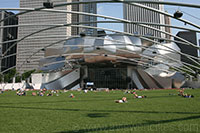 park.
park.

Pritzker Pavilion
Pritzker Pavilion
The centerpiece of the Millennium Park is the Frank Gehry-designed Jay Pritzker Pavilion. This ultra-contemporary outdoor concert venue seats 4,000 with room for an additional 7,000 on the Great Lawn. Its design is spectacular and its sound system state-of-the-art. A host of different genres of concerts and other events are held at the Pritzker Pavilion at least once-a-week.
Harris Theater
If you prefer indoor concerts or theater, visit the Joan W. and Irving B. Harris Theater for Music and Dance. This theater seats just over 1,500 people and is perfect for more intimate events, such as ballets or chamber music concerts.
Crown Fountain
Kids and adults alike love the innovative Crown Fountain. 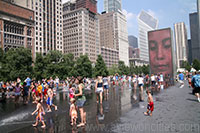 The fountain, designed by Spanish artist Jaume Plensa, consists of two 50-foot (15m) glass block towers at each end of a shallow, sparkling reflecting pool. The towers project video images of diverse Chicago citizens spitting out water, which Plensa claims is a reference to the traditional use of gargoyles, where faces of mythological beings were sculpted with open mouths to allow water to flow out
The fountain, designed by Spanish artist Jaume Plensa, consists of two 50-foot (15m) glass block towers at each end of a shallow, sparkling reflecting pool. The towers project video images of diverse Chicago citizens spitting out water, which Plensa claims is a reference to the traditional use of gargoyles, where faces of mythological beings were sculpted with open mouths to allow water to flow out

Crown Fountain
Lurie Garden
Outdoor enthusiasts will also enjoy the 2.5-acre (1 hectare) Lurie Garden. Hundreds of colorful flowers and green shrubs cover the garden. You'll find mostly native plants, a reference to the tall prairie grasses found in Illinois. A 15-foot-high (4.5 m) "shoulder" hedge represents Carl Sandburg's famous description of Chicago as the "City of the Big Shoulders".
Cloud Gate
Architecture buffs will also enjoy the quirky Cloud Gate, designed by British artist Anish Kapoor. This bean-shaped structure was inspired by liquid mercury and is among the largest sculpture of its kind in the world, measuring 66-feet long by 33-feet high (20 x 10 meter). It weighs a whopping 100 tons and is made of polished stainless steel plates.The shiny material reflects the magnificent Chicago skyline. The 12-foot-high arch (3.7m) in the middle of the sculpture serves as a gate and welcomes visitors to walk under the structure, touch the steel, and view the distorted reflections of themselves and their
BP Footbridge
Complementing the Pritzker Pavilion in design, the magnificent 925-foot-long (282 meter) 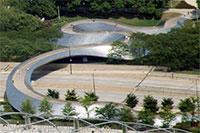 winding BP Bridge - often referred to as the 'Snake Bridge' - is well worth a stroll. Connecting Millennium Park with Daley Bicentennial Plaza, the Frank Gehry-designed masterpiece provides great views of Lake Michigan and the Chicago skyline.
winding BP Bridge - often referred to as the 'Snake Bridge' - is well worth a stroll. Connecting Millennium Park with Daley Bicentennial Plaza, the Frank Gehry-designed masterpiece provides great views of Lake Michigan and the Chicago skyline.
Brushed stainless steel panels line the sides of the unique bridge and provide an acoustic barrier for traffic noise as it crosses busy Columbus Avenue. The hardwood deck is easily maneuverable for visitors with disabilities.

BP Footbridge
Brushed stainless steel panels line the sides of the unique bridge and provide an acoustic barrier for traffic noise as it crosses busy Columbus Avenue. The hardwood deck is easily maneuverable for visitors with disabilities.
More attractions
You’ll also want to make a stop at the classic Millennium Monument with its stately Doric columns rising 40 feet (12 meter) in the air. At the center of the monument is the Millennium Fountain.
Winters take visitors to the McCormick Tribune Plaza and Ice Rink,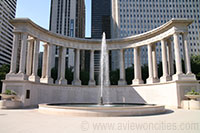 boasting state-of-the-art ice-making machines that can even withstand unusually warm winter weather.
boasting state-of-the-art ice-making machines that can even withstand unusually warm winter weather.
Winters take visitors to the McCormick Tribune Plaza and Ice Rink,

Millennium Monument
You can also enjoy changing exhibits along the Chase Promenade and have a chance to view local art at the Boeing Galleries. The Exelon Pavilions house Millennium Park’s excellent visitor center, a great place to start your tour if you’re new to the park.


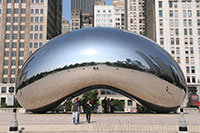









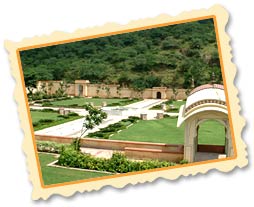 Sisodia Rani Ka Bagh is a beautiful garden, located at a distance of 10 kms from Jaipur, on Jaipur-Agra Highway. Sisodia Bagh gets a prime attraction in the charming city of Jaipur. The Garden appeals more to the beholder, since it stands as a symbol of love. In 1728, Sisodia Rani Garden was built by Maharaja Sawai Jai Singh, with an intention to gift the garden, to his Sisodia Queen from Udaipur. As the name suggests, the Garden was named after the queen, who was adorable to the King.
Sisodia Rani Ka Bagh is a beautiful garden, located at a distance of 10 kms from Jaipur, on Jaipur-Agra Highway. Sisodia Bagh gets a prime attraction in the charming city of Jaipur. The Garden appeals more to the beholder, since it stands as a symbol of love. In 1728, Sisodia Rani Garden was built by Maharaja Sawai Jai Singh, with an intention to gift the garden, to his Sisodia Queen from Udaipur. As the name suggests, the Garden was named after the queen, who was adorable to the King. 
